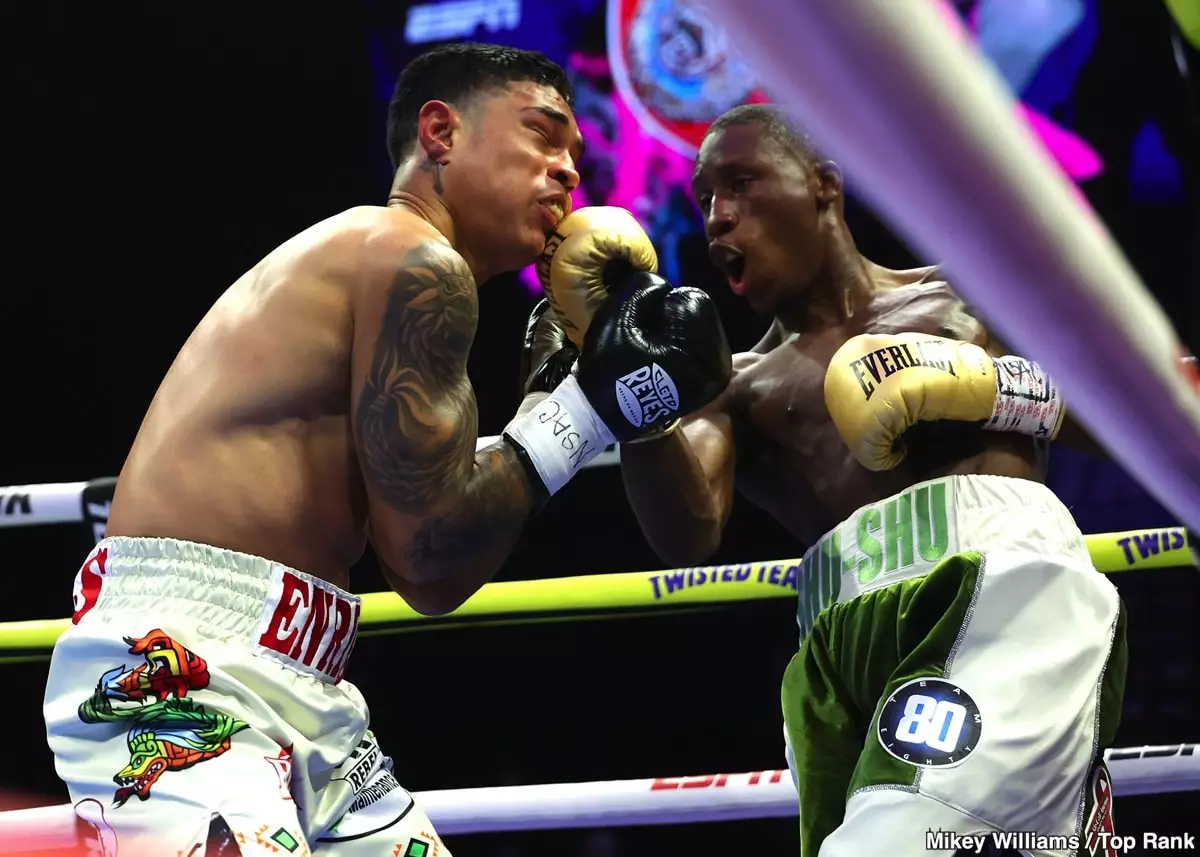In the cutthroat world of professional boxing, a callout can often signify more than just a challenge; it embodies ambition, strategy, and, at times, the stark reality of marketability. Recently, WBC featherweight champion Stephen Fulton dismissed a challenge from number-one contender Bruce Carrington, arguing that Carrington’s record is devoid of notable opponents. After defeating Enrique Vivas, a relatively lesser-known fighter, Carrington wasted no time in targeting Fulton and WBA champion Nick Ball, setting the stage for a drama-filled narrative. However, Fulton’s rebuttal raises pertinent questions about how fighters carve their paths to title opportunities, especially in a landscape rife with promotional maneuvering.
A Critical Look at Carrington’s Rising Stature
Bruce Carrington stands with an undefeated record of 15 wins, including 9 knockouts. Despite this impressive statistic, the quality of opponents he has faced comes into play when evaluating his readiness for a title shot. The criticism from Fulton highlights a growing concern in boxing: the careful crafting of a fighter’s career behind closed doors. It seems that Top Rank, Carrington’s promoters, have been methodically selecting opponents that give him opportunities to shine without exposing him to real danger.
While Carrington himself claims to be operating at a level above his competition, those assertions can be scrutinized given his choice of challengers—or lack thereof. Boxing enthusiasts have taken note of Carrington’s apparent reluctance to engage with Rafael Espinoza, a looming figure in the featherweight landscape with a formidable 26-0 record. Instead, Carrington’s attention appears to be focused on sought-after financial gains from high-profile bouts against Fulton or Ball rather than proving himself against Espinoza. This strategic, albeit questionable, trajectory often characterizes fighters in the modern boxing era.
The Double-Edged Sword of Promotion
Promoters play an indispensable role in shaping a fighter’s narrative and trajectory. For Carrington, being under the banner of Top Rank may have afforded him opportunities to build a glossy resume, but it also invites criticism when there’s an absence of real competition. Fulton’s observation about Carrington being “well-manuevered” is indicative of a broader problem in boxing, where the fear of losing, overshadowed by the allure of mega payouts, often takes precedence over honor and legacy.
Carrington’s knockout of Vivas is a feather in his cap, yet the nature of Vivas as an opponent raises eyebrows. The perceived lack of defensive skills made Vivas an easy target for Carrington’s punches, prompting Fulton to question whether Carrington has truly earned his right to challenge at the championship level. The boxing community stands divided: Can one dimensional victories over less competitive opponents authentically prepare a fighter for the elite of the division?
A Fight Worth the Hype
The call for Carrington to fight Rafael Espinoza before seeking a title shot is not just valid but imperative. It would not only solidify his standing as a contender but would also dispel lingering doubts regarding his ambitions. Moreover, this match could serve as a compelling narrative; a classic crossroads battle where risk and reward collide. For Carrington, overcoming Espinoza could elevate his status and prove that he isn’t merely a product of strategic matchmaking.
Meanwhile, the boxing world would watch intently, gauging the motivations behind Carrington’s selection of opponents. Is it ambition that drives him, or merely the pursuit of monetary success? Fighters are increasingly pressed to become brand entities in an industry that frequently prioritizes financial outcomes over sporting integrity. Should Carrington step up against Espinoza, he stands to validate not only his own career choices but also to uplift the diminished competitive spirit in the division.
In an age when boxing often finds itself mired in narratives of avoidance and calculated risks, the featherweight division could benefit from clarity. Brave matchups that pit emerging talent against established fighters not only serve to satiate fan interest; they lay down the foundations for the next generation of champions and legends. Carrington’s story is still being written, and how he chooses to script the subsequent chapters will resonate far beyond the ring, influencing how future prospects navigate their own ambitious climbs in boxing.

